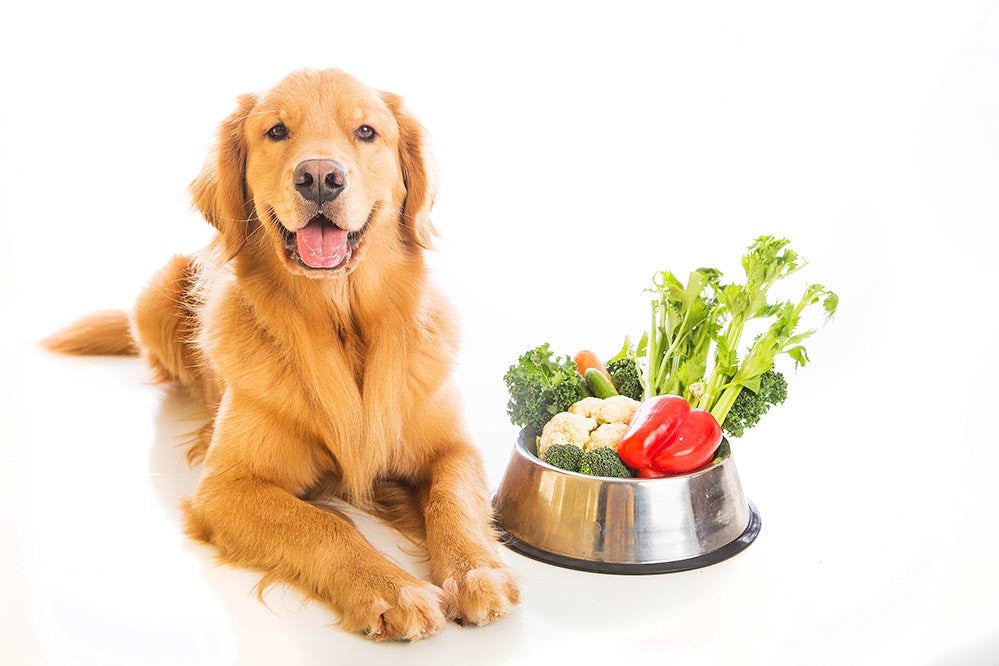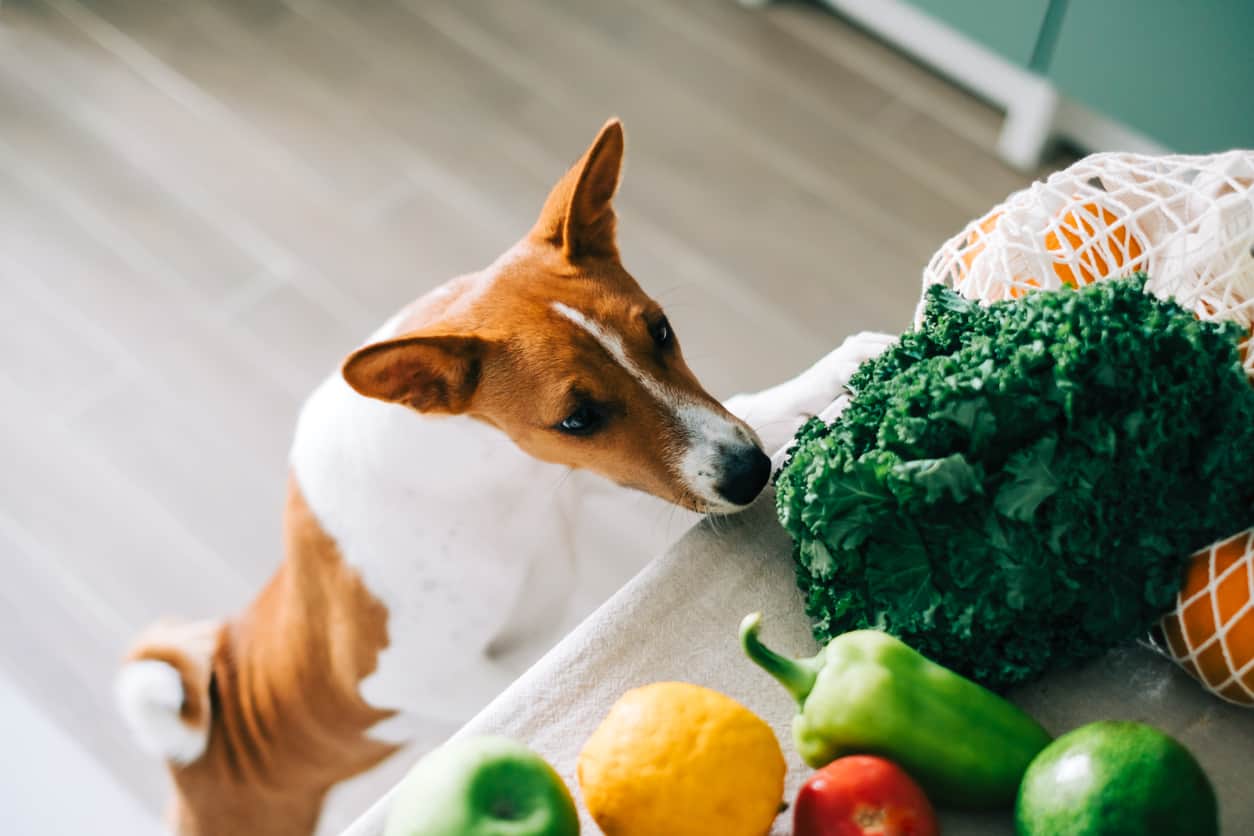When it comes to the health and happiness of our furry friends, diet plays a crucial role. Just like humans, dogs benefit from a balanced diet rich in vitamins, minerals, and fiber. While commercial dog foods provide a good baseline, adding fruits and vegetables can enhance your dog’s nutrition. But not all fruits and veggies are safe for dogs. This article explores the best options to keep your pup healthy and satisfied.
15 Best Fruits and Vegetables for Dogs to Eat
To keep your pup healthy and sound, then you need to consider the following 15 best essential fruits and vegetables that will help to provide you dog, With the best nutrition that they deserve.
1. Apples
Apples are a fantastic source of vitamins A and C, and they also provide fiber. They can help clean your dog’s teeth and freshen their breath. Just be sure to remove the seeds and core, as they can be harmful.
2. Carrots
Carrots are a low-calorie snack packed with beta-carotene and fiber. They are great for your dog’s teeth, promoting good dental health by naturally scraping away plaque. Plus, most dogs love the crunch!
3. Blueberries
Blueberries are small but mighty. They are packed with antioxidants, vitamins C and K, and fiber. These little berries can help boost your dog’s immune system and improve their overall health. They’re a perfect treat, especially frozen during hot days.
4. Sweet Potatoes
Sweet potatoes are rich in fiber and vitamins B6, C, and A. They support digestive health and can be a great alternative to regular potatoes. Cooked and mashed sweet potatoes can be added to your dog’s meal for an extra nutritional punch.
5. Green Beans
Green beans are low in calories but high in fiber and essential vitamins. They make an excellent snack for dogs who need to watch their weight. Just ensure they’re plain and free from added salt or seasonings.
6. Watermelon
Watermelon is a hydrating treat full of vitamins A, B6, and C, and it’s mostly water, which makes it great for hot days. Just be sure to remove the seeds and rind, which can cause digestive issues.
7. Pumpkin
Pumpkin is excellent for digestion and can help with both diarrhea and constipation. It’s rich in fiber and beta-carotene (vitamin A). Canned, unsweetened pumpkin is a convenient option, but fresh pumpkin works just as well.
8. Spinach
Spinach is full of iron and vitamins A, C, and K. It can help with inflammation and support heart health. Serve it cooked and plain, as raw spinach can be hard for dogs to digest in large quantities.
9. Strawberries
Strawberries are loaded with fiber and vitamin C. They also contain an enzyme that can help whiten your dog’s teeth. Serve them fresh and cut into small pieces to prevent choking.
10. Cucumbers
Cucumbers are low in calories and high in water content, making them a great hydrating treat. They also contain vitamins K, C, and B1, as well as potassium, copper, and magnesium. Slice them up for a crunchy snack your dog will love.
11. Pineapple
Pineapple is packed with vitamins, minerals, and fiber. It’s also rich in bromelain, an enzyme that can aid digestion. Remove the spiky skin and core before serving small, bite-sized pieces to your dog.
12. Peas
Peas are a good source of vitamins A, K, and B. They also contain fiber, iron, zinc, and potassium. Peas can be added to your dog’s meal for extra nutrients. Fresh, frozen, or steamed peas are all safe options.
13. Zucchini
Zucchini is a low-calorie vegetable full of vitamins and minerals, including vitamin C, beta-carotene, and fiber. It can be served raw, sliced into small pieces, or cooked without any seasoning.
14. Mango
Mango is rich in vitamins A, B6, C, and E. It also contains potassium and beta-carotene. Make sure to peel the mango and remove the pit, as it contains cyanide, which is toxic to dogs. Serve it in small, manageable chunks.
15. Broccoli
Broccoli is a nutrient-dense vegetable with vitamins C, A, and K. It also has fiber to aid digestion. Serve it in small amounts to avoid any potential digestive upset. Steamed or raw broccoli can be a crunchy treat.
How to Introduce Fruits and Vegetables to Your Dog’s Diet?
Introducing new foods should be done gradually. Start with small amounts to see how your dog reacts. Monitor for any signs of digestive upset or allergies, such as itching or vomiting. Always wash fruits and vegetables thoroughly to remove any pesticides or harmful residues.
Portion Control and Safety Tips
While fruits and vegetables are healthy, they should not replace your dog’s regular diet. Treats should make up no more than 10% of your dog’s daily caloric intake. Remove any seeds, pits, or hard rinds, which can be choking hazards or toxic.
What are the Fruits and Vegetables to Avoid?
Not all fruits and vegetables are safe for dogs. Avoid grapes, raisins, onions, garlic, and avocados, as they can be toxic. Always double-check before introducing a new fruit or vegetable to your dog’s diet.

What are the Benefits of Fruits and Vegetables to Dog?
Incorporating fruits and vegetables into your dog’s diet can improve their overall health. They can provide essential nutrients, aid digestion, promote healthy skin and coat, and boost the immune system. Plus, they can help with weight management by offering low-calorie snack options.
What are the Signs of Allergies or Intolerance of Fruits and Vegetables to Dog?
Keep an eye out for any signs of allergies or intolerance when introducing new foods. Common signs include itching, swelling, hives, vomiting, diarrhea, or difficulty breathing. If you notice any of these symptoms, discontinue the food and seek advice.
Making Homemade Dog Treats
Homemade dog treats are a great way to control what goes into your dog’s snacks. There are numerous recipes available using fruits and vegetables. From frozen treats to baked goodies, you can make healthy, delicious snacks that your dog will love.
Hydration and Fresh Produce as a Benefit for Dogs
Fruits and vegetables can contribute to your dog’s hydration, especially during hot weather. Watery fruits like watermelon and cucumber are perfect for keeping your dog cool and hydrated.
Seasonal Fruits and Vegetables
Take advantage of seasonal produce for the freshest and most nutrient-rich options. Seasonal fruits and vegetables are often more affordable and can offer a variety of flavors and textures for your dog to enjoy.
Training and Rewards
Using fruits and vegetables as training treats can be effective and healthy. Small, bite-sized pieces of carrots, apples, or blueberries can serve as low-calorie rewards that keep your dog motivated and engaged.
How do I Prepare Fruits and Vegetables for Dogs?
Preparation is key to making fruits and vegetables safe and enjoyable for your dog. Wash thoroughly, remove any seeds or pits, and cut into appropriate sizes. Cook vegetables like pumpkin and sweet potatoes to make them easier to digest.
Consulting with a Professional
Before making significant changes to your dog’s diet, it’s always wise to seek advice. They can provide personalized recommendations based on your dog’s specific needs and health conditions.
Conclusion
Incorporating a variety of fruits and vegetables into your dog’s diet can offer numerous health benefits. From the antioxidant power of blueberries to the digestive aid of pumpkin, these natural treats can enhance your dog’s nutrition and overall well-being. Always introduce new foods gradually and monitor your dog for any adverse reactions. With a little care and attention, you can provide a tasty and healthy diet that supports your dog’s happy, healthy life. So next time you’re preparing your own meals, don’t forget to set aside a little something for your four-legged friend!
